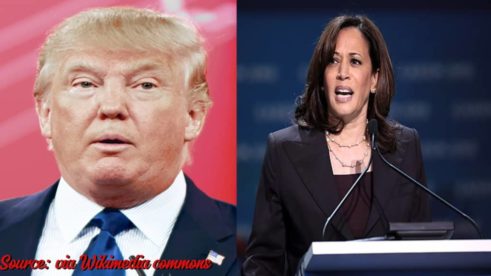Vice President Kamala Harris has decisively outperformed former President Donald Trump in the arena of convention speech ratings. According to Nielsen, the trusted arbiter of television viewership, Kamala Harris’s address at the Democratic National Convention (DNC) garnered a remarkable 15 rating, signifying that 15% of viewers tuned in to hear her message. This impressive figure stands in stark contrast to Trump’s Republican National Convention (RNC) speech last month, which managed only a 12.3 rating.
The significance of this 22% margin cannot be overstated. It translates to millions more Americans choosing to engage with Kamala Harris’s vision for the future rather than Trump’s rhetoric. This disparity in viewership serves as a potent indicator of the shifting political landscape and the evolving preferences of the American electorate.
Kamala Harris: Rising Democratic Star vs. Fading Republican Icon: A Tale of Two Conventions
The Vice President Kamala Harris’ ratings triumph is not an isolated incident but part of a broader trend evident throughout the convention season. Tim Walz, the Democratic vice presidential candidate, emerged as another standout performer, attracting 11% more viewers than his Republican counterpart, J.D. Vance. This consistent outperformance by Democratic speakers suggests a growing enthusiasm gap between the two parties.
Delving deeper into the numbers reveals a pattern of Democratic dominance. The DNC’s opening night commanded an audience of 20 million viewers, comfortably surpassing the RNC’s 18.1 million. The disparity became even more pronounced on the second day, with the DNC maintaining a strong 20.8 million viewership while the RNC’s audience dwindled to 14.8 million. These figures paint a picture of a Democratic Party capturing the nation’s attention and a Republican Party struggling to maintain its grip on the public imagination.
Florida Flashpoint: Kamala Harris’s Triumph in Trump’s Backyard
In a twist that must be particularly galling for the former president, Kamala Harris achieved her highest ratings in West Palm Beach, Florida – a stone’s throw from Trump’s Mar-a-Lago residence. This local ratings victory in Trump’s adopted home state adds an extra layer of symbolism to Kamala Harris’s national triumph, suggesting that even in traditionally Republican strongholds, the Vice President’s message is resonating.
The irony of Kamala Harris’s success in Trump’s backyard is not lost on political observers. It raises questions about the former president’s hold on his base and the potential for Democratic inroads in key battleground states. This local ratings victory could be a harbinger of broader shifts in voter preferences as the election season progresses.
Kamala Harris: The Psychology of Ratings: Trump’s Achilles Heel
For a former reality TV star like Trump, who has long prided himself on his ability to draw an audience, these ratings figures are likely to be particularly demoralizing. Throughout his presidency and beyond, Trump has consistently touted television ratings as a measure of success and popularity. The fact that he has been so decisively outperformed by his political rivals strikes at the heart of his carefully cultivated image as a media maestro.
This ratings defeat may have ramifications beyond mere ego bruising. It could potentially undermine Trump’s narrative of unparalleled popularity and influence within the Republican Party. As party members and donors assess the political landscape, these viewership numbers may factor into their calculations about where to throw their support in the upcoming election cycle.
Kamala Harris: Decoding the Viewership Surge: Policy, Personality, or Both?
While the raw numbers clearly favor the Democrats, the reasons behind this viewership disparity merit closer examination. Are viewers tuning in because of the substantive policy discussions offered by Kamala Harris and her colleagues, or is it the force of their personalities that’s drawing audiences? The answer likely lies in a combination of factors, including the Democrats’ messaging strategy, the personal charisma of their speakers, and perhaps a degree of voter fatigue with the Republican narrative.
Political analysts will be poring over these figures in the coming weeks, attempting to discern what they portend for voter turnout and engagement in the upcoming election. High viewership doesn’t automatically translate to votes, but it does indicate a level of public interest and engagement that could be crucial in a closely contested race.
Implications for Campaign Strategies
As both parties digest these ratings results, they will inevitably influence campaign strategies moving forward. For the Democrats, the strong viewership numbers may embolden them to push for more prime-time speaking opportunities for Kamala Harris and other high-performing surrogates. They may also seek to capitalize on the apparent enthusiasm gap by ramping up their get-out-the-vote efforts.
On the Republican side, these figures may prompt a reevaluation of their messaging and media strategy. There could be increased pressure to find new ways to captivate audiences and counter the Democrats’ apparent advantage in public engagement. As the election season heats up, both parties will be watching closely to see if these early viewership trends hold, and adjusting their tactics accordingly in the quest for electoral victory.














